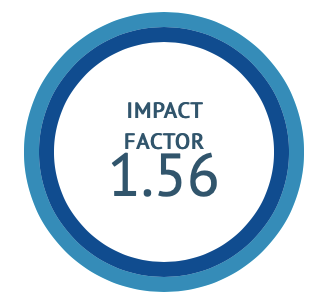In-Vivo and In-silico Study of Ludwigia perennis L. Leaf Extract: A Promising Source of Anti-depressant Agents
DOI:
https://doi.org/10.47552/ijam.v16i2.5758Keywords:
Forced Swim Test, Tail Suspension Test, Docking, ADME, Toxicity, Pass PredictionAbstract
Ludwigia perennis is used in India to treat several ailments in the traditional system of medicine. The chloroform leaf extract of Ludwigia perennis was evaluated for depression and anxiety using in vivo and in silico studies. Wistar albino rats were divided into groups based on parameters like control, standard, 20, and 30 mg/kg b.w. chloroform leaf extract groups for drug administration using gastric intubation. The tail suspension test (TST) and forced swim test (FST) were used to assess the antidepressant activity. Molecular docking against monoamine oxidase A (MAO-A), ADME analysis, toxicity tests, and pass prediction studies were among the in silico investigations. A delayed onset of immobility and lowered immobility time were seen at both the treatment doses (FST: 38.49±2.04 and 35.55±2.95 s; TST: 30.23±1.73 and 26.72±2.26 s) and the standard drug fluoxetine (FST: 31.26±1.76 and TST: 25.54±1.08 s), indicative of its antidepressant ability. While 30 identified phytochemicals were docked with monoamine oxidase A proteins, six compounds mainly showed higher binding affinity. It is stated that γ-sitosterol has a binding affinity of -8.5. The binding affinity of five compounds, namely stigmasterol, ergosterol, dibutyl phthalate, campesterol, 7,9-Di-tert-butyl-1-oxaspiro(4,5)deca-6,9-diene-2,8-dione is -8.2, -8.2, -8.0, -7.8, and -7.4 are like this. The results of the molecular docking studies indicate that the six chemicals that were successfully docked have an anti-depressive impact. Apart from docking, pharmacokinetic and PASS tests validated their drug-likeness, predicted safety after consumption, and predicted pharmacological effects. The chloroform leaf extract of Ludwigia perennis is a rich source of bioactive compounds with strong antidepressant properties.
Downloads
Published
How to Cite
Issue
Section
License
Copyright (c) 2025 International Journal of Ayurvedic Medicine

This work is licensed under a Creative Commons Attribution-NonCommercial-ShareAlike 4.0 International License.
The author hereby transfers, assigns, or conveys all copyright ownership to the International Journal of Ayurvedic Medicine (IJAM). By this transfer, the article becomes the property of the IJAM and may not be published elsewhere without written permission from the IJAM.
This transfer of copyright also implies transfer of rights for printed, electronic, microfilm, and facsimile publication. No royalty or other monetary compensation will be received for transferring the copyright of the article to the IJAM.
The IJAM, in turn, grants each author the right to republish the article in any book for which he or she is the author or editor, without paying royalties to the IJAM, subject to the express conditions that (a) the author notify IJAM in advance in writing of this republication and (b) a credit line attributes the original publication to IJAM.




